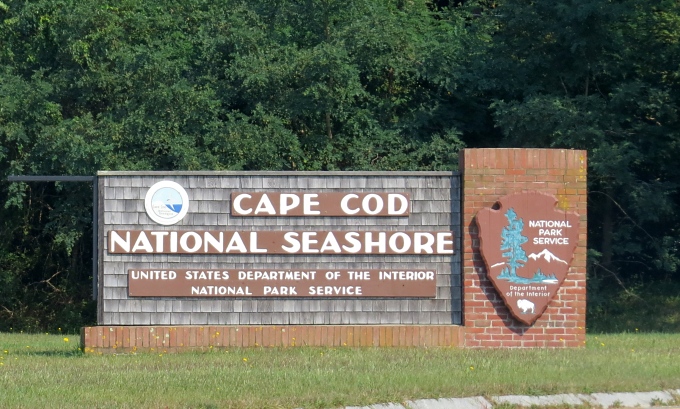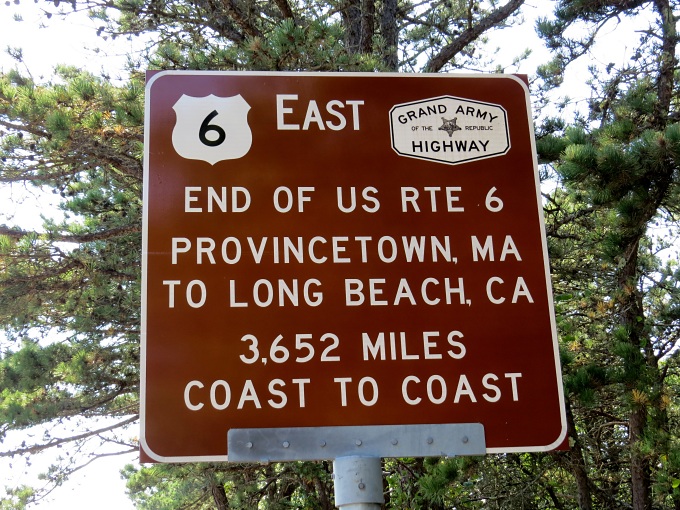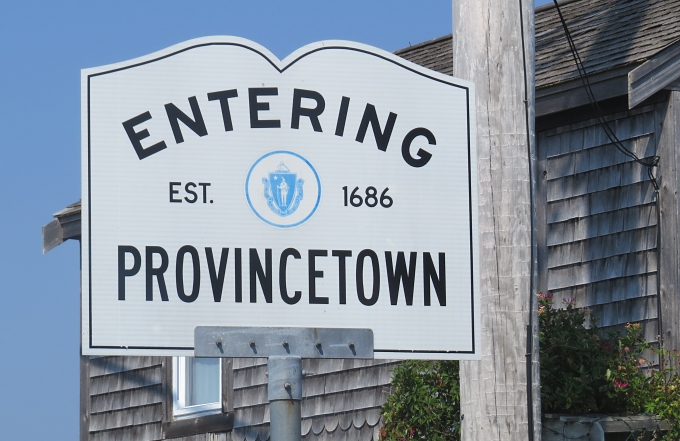
Provincetown, Massachusetts, informally known by residents as P-town, sits at the very tip of hook-shaped Cape Cod. It's known as the Pilgrims' first landing place in 1620 and the site where the Mayflower Compact was signed. It's also known for its beaches, the oldest continuous American art colony, the birthplace of American theater, the tourist industry and as a vacation spot for gay people. It's all of those things and much more. We decided the 120 mile ride (193km) on a warm and sultry September day could be our last chance to grasp a piece of summer. You never know what weather you'll get once October comes around.
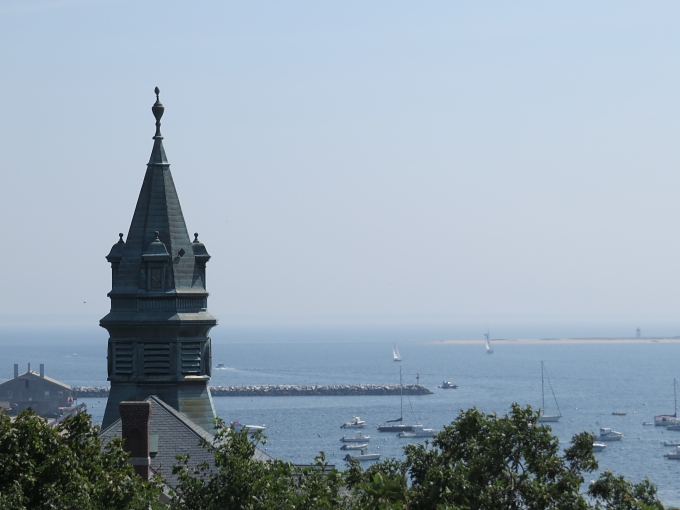
We headed directly to our destination with only a few photo stops en route. We wanted to spend as much of our day in this historic, unique place as possible. We hadn't been here in years; the last time we'd anchored Cups in the protected harbor.

As we passed through Truro and approached the town, we could appreciate the weathered gray, shingled houses lining the beachfront and the view across the bay. In 1654, the Governor of the Plymouth Colony purchased this land from the Chief of the Nausets for a selling price of two brass kettles, six coats, 12 hoes, 12 axes, 12 knives and a box. The real estate is a bit more dear nowadays.

Though it was off-season, the narrow main road through town was packed with tourists. We parked, picked up a self-directed walking tour guide at the tourist office, then climbed the hill to the Pilgrim Monument. It's an easy climb of 116 steps and 60 ramps and we weren't even winded when we arrived at the top. The 360º views from 350' above sea level were a bit hazy, but stupendous nonetheless.
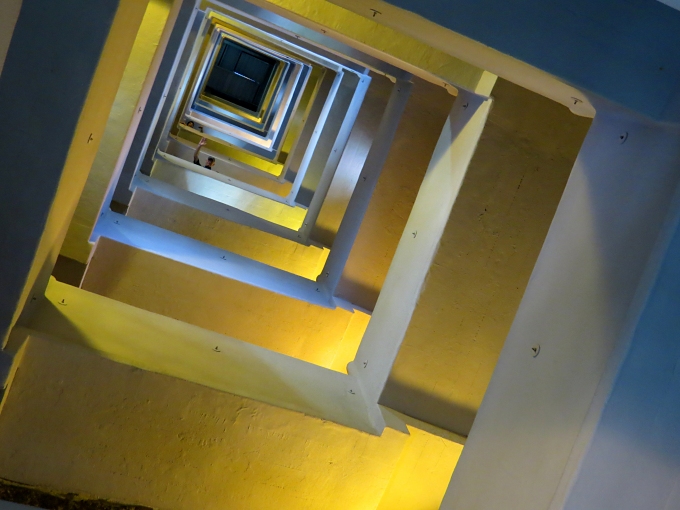
The views looking up inside the monument were unique and definitely worthy of a photo or two.
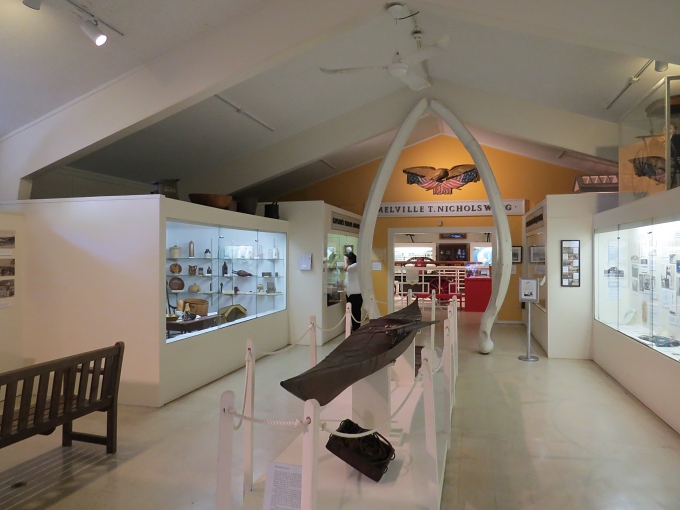
The Provincetown Museum on the same property was small, but interesting. A whale jawbone was on display and provided an excellent introduction to P-town's whaling and fishing history. We checked out everything from the first Pilgrim's visit and the signing of the Mayflower Compact to Provincetown's oldest fire engine, antique dollhouses and a photographic overview of the production of the first Eugene O'Neill play by the Provincetown Players.

The day was glorious and we ambled along at a leisurely pace up and down hills and along narrow back streets. The downtown area offers all sorts of unique boutiques, restaurants and bars including the Atlantic House, more often called the A-House. It's a well known drinking and dancing establishment that's been in continuous operation for over two centuries. It also lays claim to being one of the oldest historical buildings in town (1798) and possibly one of the first discos in the USA. (wow!)

Every street offered something unique from the historical to the ridiculous. We enjoyed it all.

The town library was a surprise. Built in 1860, it's been a church, an art museum and a Center for the Arts before becoming the public library in 1976. A whimsical sculpture entitled “Tourists” sits in front and I wondered if that's how we were viewed. To tell you the truth, we never consider ourselves tourists (although we are); we just think that everyone else is.

We climbed the well-worn wooden stairs to the second floor. We'd read about the half-scale “ship in a bottle” on the second floor, but we weren't quite expecting what we found. At 66.5' (20m), with a 12.5' (3.8m) beam, the schooner, Rose Dorothea, takes up most of the floorspace. She's longer than Nine of Cups by over 20' (6m)!

There are elegant cutouts in ceiling to allow for her masts and glass has been removed from a window to allow her bowsprit to extend through the wall into the reading room next door. Built in situ, it's an astonishing tribute to Provincetown's fishermen and shipbuilding traditions. Moving her to another marina will, however, be quite the challenge.

The day wasn't finished though. Stay tuned for our visit to the Cape Cod National Seashore.
 The leaves are starting to turn to fall colors and fall off the trees. We're digging out our turtlenecks and warm sweaters. The furnace rumbled on during the night when the temperature dipped to 35F(2C). We could hear the pipes crackle and the radiators start to sizzle as the steam heat crept in. It's autumn in New England.
The leaves are starting to turn to fall colors and fall off the trees. We're digging out our turtlenecks and warm sweaters. The furnace rumbled on during the night when the temperature dipped to 35F(2C). We could hear the pipes crackle and the radiators start to sizzle as the steam heat crept in. It's autumn in New England.





